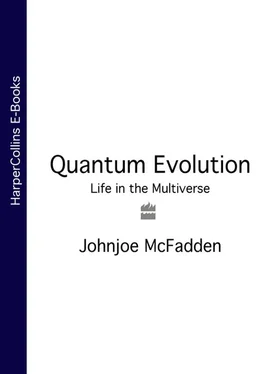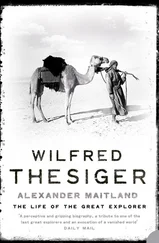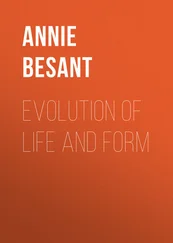But is it so hard to identify what is alive? When I was a child, a popular children’s game was ‘Animal, Vegetable or Mineral’. 8It is a simple guessing game in which the first player has secretly written down something – a dog, house, brick, carrot – indeed, anything at all. The object of the game is for the player’s opponents to guess what is written down. They can ask only simple questions and the reply is always yes or no – but with one exception. The first question asked is: is it animal, vegetable or mineral? In my experience of playing this game, I do not remember any player having any problem deciding whether it was animal vegetable or mineral. We would all agree that a lion was an animal, a turnip vegetable and a brick mineral. It seems that even as children, we have little difficulty recognizing the qualities that identify and characterize living things. But how?
To make the game both harder and more enlightening, we should put ourselves in the position of the alien spacecraft; imagining that the things we have to identify are completely unfamiliar. How then would we decide what is alive or dead? How would we recognize life on other planets? The Exobiology (search for alien life) Programme of the American Space Agency at NASA has the following definition: ‘Life is a self-sustained chemical system capable of undergoing Darwinian evolution.’ This strikes me as an impractical life definition, particularly for an exobiology programme. How long would any spaceprobe have to wait to detect Darwinian evolution on a planet? It is hard enough to detect Darwinian evolution on Earth. I am also sure that the NASA definition was not the one we used as children; yet we were still able to identify life. So, what did we use?
Our alien spacecraft spotted the rock pigeon’s ability to fly and this prompted the LIFE signal. Flying is a particularly impressive example of mobility, the property that Aristotle recognized over two millennia ago as the essential characteristic of life. However, as he argued, the mobility characteristic of life is far more subtle than mere movement. Sand-grains blown by the wind are not alive. Water flowing along the course of a stream is not alive, nor are the stones tumbling down the stream-bed. But a salmon leaping up a waterfall is alive, and instantly recognizable as of a quite different nature than either water or stones. It would not matter if an alien salmon were coloured green and shaped like a carrot; if it leapt upstream we would recognize it as living.
But what is it about the motion of a salmon or a bird that makes it so distinctively animate ? 9It is that a fish swimming or a bird flying is initiating its own movement against the prevailing exterior forces. Water flows towards the sea under the influence of gravity. The water’s currents (mostly frictional forces) tumble a rock along a stream-bed. But the salmon’s majestic leap out of the spray of a waterfall seems to defy both gravity and current to climb upstream towards its spawning ground. This seems the crux of the matter. Inanimate objects such as water or rocks are moved by the forces surrounding them; but living organisms have a internal vitality and vigour allowing them to defy these forces of nature and perform autonomous or directed actions.
This capability to initiate actions is both more general and more fundamental to life than mere movement. Exploring this further, we return to our alien spacecraft and imagine it has landed in a forest devoid of animal life. How would it recognize immobile plants as living organisms (we will for convenience ignore the possibility of moving plants such as the Venus flytrap)? From our argument above, we would look for a plant’s ability to initiate action or movement against prevailing exterior forces. There are many ways a plant does this. The most obvious is its ability to grow. But many things grow. A mountain may grow (if you wait long enough), or a fire may grow. However, a mountain is pushed up by plate tectonics; a fire increases if the temperature of surrounding flammable material exceeds the temperature needed to ignite the material. In both these cases, the growth is in response to exterior forces. Neither possesses the ability to initiate autonomous actions. In contrast, the acorn initiates the process, culminating in the generation of a mature oak tree: it is a directed action. If we filmed the growth of an acorn and replayed the film, speeding the action so that the tree’s entire life took just a few minutes, then we would see the oak appearing to raise itself up from the forest floor – in defiance of gravity – propelling itself towards the sunlight. This ability to move against external forces is a fundamental property of life, one lost when life is lost. If we continued to run the film of our oak tree for many years, we would observe that eventually the tree would no longer sprout new growth in the spring; it would remain leafless and eventually it would lose the ability to defy gravity, falling to the forest floor.
Somehow, whilst an organism remains alive, it is able to resist external forces and perform directed actions. When a pigeon perched on a tree decides to fly, its directed action is to beat its wings, thereby creating the turbulence that lifts it up into the air. Although inanimate objects may similarly perform actions, they lack the ability to direct them. Consider a stick of dynamite. In a sense, it can perform an action by exploding and may similarly get lifted into the air. Is the dynamite any different from the bird? Yes it is. If we determined the chemical composition of the dynamite and then added the exterior forces acting upon it, we could predict the dynamite’s subsequent behaviour and the effect on its environment. We could predict when it would explode. The dynamite cannot direct its action. Its behaviour is entirely deterministic.
Determinism is one of the bedrocks of classical science. It is the principle that the future (or present) state of any system (say, the stick of dynamite) is determined solely by its past. If you know the precise configuration of any system, by adding in the laws of physics and chemistry, you can calculate its future behaviour. The principle is at the heart of Newtonian mechanics, allowing astronomers to calculate the movement of planets from their known positions and trajectories and so forecast the precise times of solar and lunar eclipses far into the future (or back into the past). It is of course entirely impractical to determine the precise positions of all particles for anything other than the simplest systems but, in principle, determinism should reign – we should be able to predict when the dynamite would explode from knowledge of existing conditions. There is nothing that the dynamite can do , no action it can take, that would affect when it is likely to explode. It does not possess the ability to direct its own actions.
However, if we similarly determined the pigeon’s precise chemical composition and added the prevailing temperature, wind conditions, etc., could we predict that it would fly up into the air? Perhaps. But then, suppose it spied a bag of seed on the ground. It would then be more likely to descend towards the food. But perhaps there is a cat nearby. The pigeon might decide to wait in the tree until the cat has crept away. Could we predict all these possible behaviours by analysing the chemistry of the pigeon alone or even that of the pigeon and its surrounding environment? The only differences which have led to the pigeon’s altered behaviour are the pattern of light photons that fell upon its retina (carrying the images of food, cat, etc.). If we include these photons in the equations of motion that describe the pigeon and its environment, would the equations predict such widely different outcomes?
I hope to convince you that the answer to this question is no. We cannot account for life with classical science alone. In particular, we cannot account how living creatures are able to direct their actions according to their own internal agenda. For higher animals, such as ourselves, we call this ability our will. The ability to will actions is a profoundly puzzling aspect to living organisms that appears to contradict scientific determinism. There is no role for will in determinism; we do not have choices. Every action that we perform should be determined, not by any decision we make but by the precise molecular configuration of our bodies at the time preceding our action.
Читать дальше












